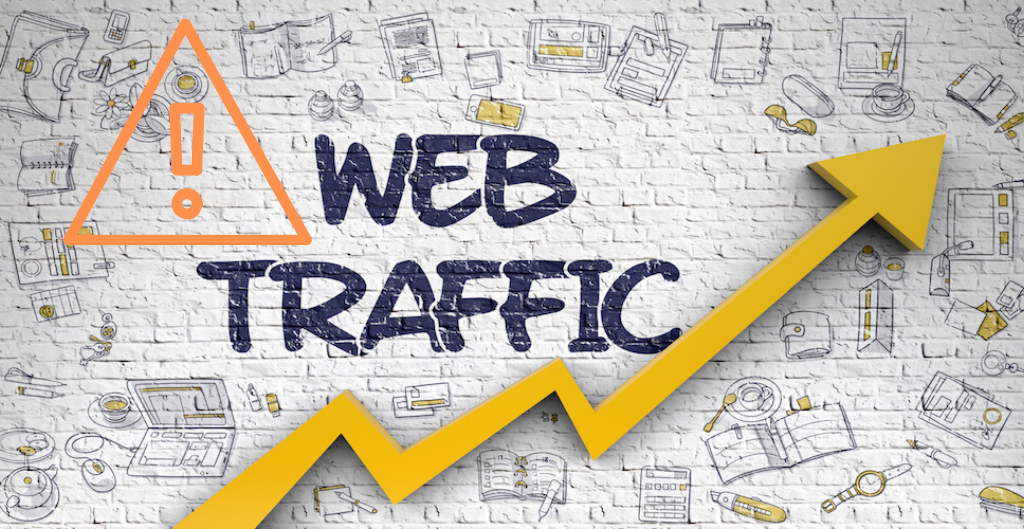Every year, e-commerce site owners and e-merchants have to contend with peak traffic periods on their online platforms. These periods correspond to important events such as sales, Black Friday or Christmas, and the resulting problems faced by the sites have to be dealt with every year. It is important to know that a traffic spike can sometimes lead to malfunctions. This article takes you through some of the steps you need to follow to guarantee the availability of your site during these events.
E-commerce sites and periods of increased traffic
Every year, websites specialising in e-commerce experience a sharp increase in traffic, especially around the end of the year. Internet users are notoriously more active during sales launch periods, Christmas and Black Friday for instance. Clearly, this is good news for business and website owners need to take advantage of these events to launch different marketing campaigns and promotional offers while using other optimisation levers such as logistical actions. This allows them to generate more than half of their turnover each year.
The problems of seasonal spikes
Even if all the technical teams are on maximum alert, high site traffic can lead to failures. The site may become unavailable or browsing may become slower. This can have disastrous consequences for your sales, as Internet users are put off by the situation, leading to lost orders and significant damage to the site’s e-reputation. E-merchants must therefore take other measures to ensure the continuous accessibility of their platforms.

How to ward off the problem?
The best way of ensuring that a site is always accessible during busy periods is to anticipate these traffic peaks. To do this, several measures need to be taken to prevent excess traffic from slowing down or crashing your website.
Always anticipate
Thinking about traffic peaks it’s not something you can leave to the last minute. Ideally, you should prep the site 1 to 2 months beforehand. You will then have to carry out load tests to simulate traffic peaks. This will tell you how your site will react and allow you to take the necessary measures to avoid any problems when the time comes.
Define your strategic processes
The quality monitoring of a site shouldn’t focus primarily on its home page. A website consists of several pages with different technologies and functionalities and these must all be considered to avoid errors on D-Day. You should therefore think about evaluating your strategic processes. It’s not just a question of identifying your customer area or defining the user path. You will have to consider and test the solutions proposed to Internet users:
- Access to a product sheet via search engine or mega menu.
- Access to the site by prospects and customers leading to different actions in terms of identification and customer account creation.
- Presence of random visitors on the site which can constitute a load without following a precise user path.
- Existence of addict shoppers pre-registering their baskets with a user path intent on making a purchase.
Remember that you will also need to anticipate the context in which the Internet user browses in addition to the possible user scenarios. You will need to define whether they are browsing on the mobile or desktop version. Further tests on the Webservices and the application are also necessary.
Set traffic goals rationally
You must always stay rational when estimating your traffic in case of peaks in traffic. You will need to keep your platform fast, functional and accessible without exceeding your infrastructure budget. Increasing your hosting by a factor of 10 is not the only alternative and it is not a guarantee that certain important functionalities will work properly.
The best thing to do is to estimate your traffic based on past years before spreading it over the many user paths using certain data (user habits, Analytics data). These actions allow you to establish an environment adapted to your actual activity in order to define and anticipate the consequences of peak traffic.
Perform tests
Once you have the user paths and the traffic estimate, you can perform tests on your site to simulate the increase in traffic. This is done by injecting virtual users to follow the different paths. You can perform the test over a period of about 30 minutes to an hour to see the key phases: increase, stabilisation and decrease.
Study your site behaviour
Based on the tests carried out, it is possible to evaluate the behaviour of your site and its traffic limits that may cause disruptions. this also allows you to identify the variations in the performance and loading times of your pages, as well as the proper functioning of all the paths. For detailed performance reports, you can use a tool such as the internetVista tool. It allows you to quickly identify your Internet services that are failing in terms of availability and speed by evaluating various parameters.
Optimise and test all the time
Once you have noticed the error areas on your site, you can carry out optimisation operations adapted to the anomalies. These efficient and clear approaches focus on the steps that are considered most critical. You can then evaluate these re-optimisations by testing your site once again.
Here are the advantages of following these different steps:
- Improved user experience
- Achievement of KPI marketing objectives such as increased conversion rate
- Greater visibility regarding problems with the site’s operation
- More efficient testing process
Optimised resource mobilisation (people and time)

Use an appropriate solution to perform this optimisation process
Carrying out these optimisation steps generally involves thorough upstream and downstream monitoring work with objective metrics. Availability monitoring will make it possible to observe failures and, especially in this case, to check response times. If the latter deteriorates, the time is ripe to analyse the situation and take the necessary actions.
To check the strategic paths of Internet users, internetVista offers scenario monitoring or transactional monitoring. You define your scenario and internetVista plays this scenario at regular intervals, creating an incident and alerts as soon as a problem is detected.
